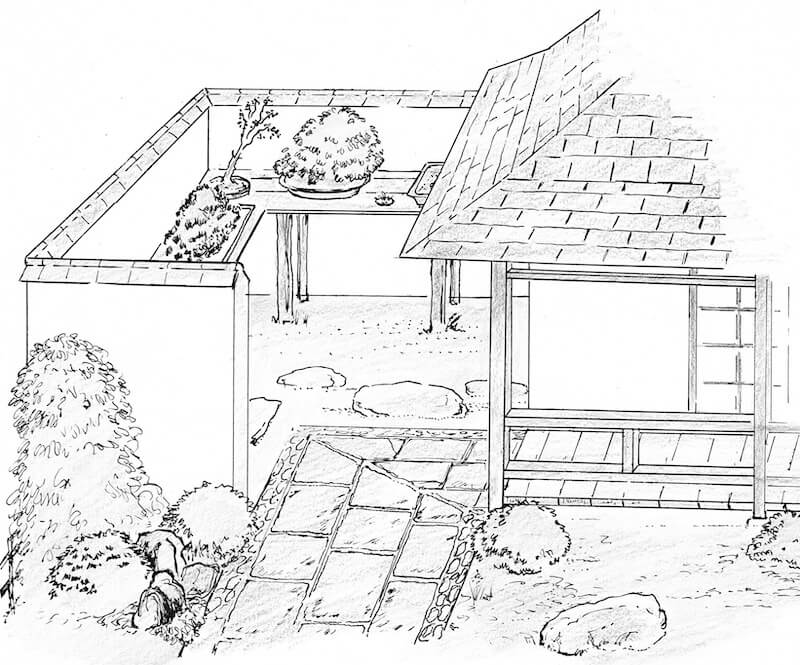Frequently asked questions

What is a Japanese Garden?
A Japanese garden is a traditional style of garden that originates from Japan and incorporates natural and man-made elements to create a harmonious and peaceful environment. Traditional styles include courtyard gardens, stroll gardens, tea gardens and zen gardens. They are designed to be viewed from a specific viewpoint, in order to fully appreciate the beauty and serenity of the space.
The use of feature rocks, stone lanterns and pathways provide structural interest in the garden all year round. Deciduous plants inject bursts of colour during the changing seasons. Contrastingly evergreen plants maintain their foliage throughout the year and provide a consistent backdrop of colour and texture, especially in the winter months when deciduous plants have lost their leaves.
Japanese-inspired gardens capture the essence of a traditional Japanese garden, whilst incorporating modern design features.
Are Japanese gardens low maintenance?
Japanese gardens can be low maintenance, depending on their design. Traditional Japanese gardens are designed to mimic natural landscapes and often feature rocks, gravel, and water arranged in a way that requires minimal upkeep. Some Japanese gardens may require more maintenance than others, such as the level of density and variety of plants used that need regular pruning. Larger gardens may require more time and resources to maintain. A key role within the design phase is to create an attractive garden that ultimately requires a level of maintenance that you are comfortable with.
How much space do I need for a japanese garden?
Japanese gardens can range in size from small courtyard gardens to expansive park-like settings. A small area could accommodate a rock garden or water feature, with some carefully placed plants or trees. A larger area could include a tea house or stroll garden. The key to creating a tranquil and calming space is to focus on fewer, but bolder elements.
Are japanese gardens suitable for the UK climate?
Many traditional elements of Japanese gardens, such as rocks, water features, and evergreen plants, can thrive in the UK climate. Some more delicate or tropical elements, such as certain types of bamboo or moss, may require additional protection or care to survive.
The design of the garden can be adapted to suit the local climate and conditions. For example, incorporating drainage systems or choosing plants that are well-suited to the local soil type can help ensure the longevity and health of the garden.
With thoughtful planning and careful selection of appropriate elements, Japanese gardens can be a beautiful and harmonious addition to the UK landscape.
Is less really more?
The concept of “less is more” is indeed an important principle in Japanese gardens. Japanese gardens are often designed to create a sense of peacefulness and tranquility, and one way to achieve this is by using a minimalist approach.
Rather than packing a garden with an abundance of plants and features, Japanese gardens often contain a limited number of carefully selected elements to create a simple yet elegant composition. This creates a sense of spaciousness and allows visitors to appreciate each element in detail.
I have a limited budget, can I create an interesting garden?
Gardens constantly evolve and can be added to over time. The key is to have an initial plan for the garden, of which you could implement in stages to suit your budget. Choosing smaller plants that will grow into the space over time rather than mature specimens can help reduce initial costs.


